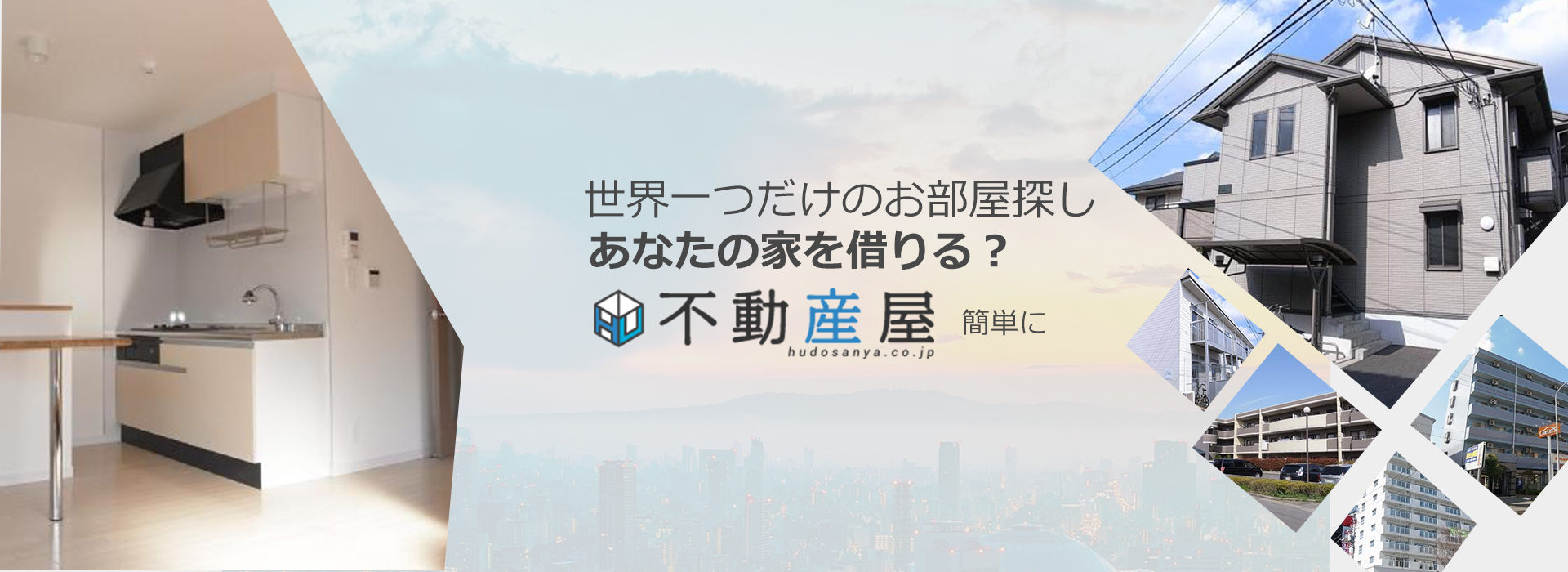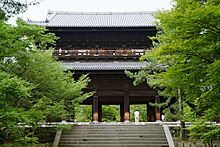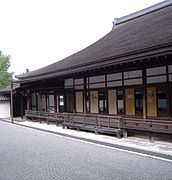Nanzen-ji (南禅寺, Nanzen-ji?), or Zuiryusan Nanzen-ji, formerly Zenrin-ji (禅林寺, Zenrin-ji?), is a Zen Buddhist temple in Kyoto, Japan. Emperor Kameyama established it in 1291 on the site of his previous detached palace. It is also the headquarters of the Nanzen-ji branch of Rinzai Zen. The precincts of Nanzen-ji are a nationally designated Historic Site and the Hōjō gardens a Place of Scenic Beauty.[1][2]
Contents
[hide]
History[edit]
Nanzen-ji was founded in the middle Heian period (1291, or Shōō 4 in the Japanese era system).[3] It was destroyed by fire in 1393, 1447, and 1467, rebuilt in 1597, and expanded in the Edo era.[4] A large complex, it has varied over time between nine and twelve sub-temples.
Zenkei Shibayama, who provided a popular commentary on the Mumonkan, was an abbot of the monastery.
Significance in Zen Buddhism[edit]
Nanzen-ji is not itself considered one of the “five great Zen temples of Kyoto”; however, it does play an important role in the “Five Mountain System” which was modified from Chinese roots. Tenryū-ji (天龍寺, Tenryū-ji?) is considered to be one of the so-called Kyoto Gozan (京都五山, Kyōto gozan?) or “five great Zen temples of Kyoto”, along with Shōkoku-ji (相国寺, Shōkoku-ji?), Kennin-ji (建仁寺, Kennin-ji?), Tōfuku-ji (東福寺, Tōfuku-ji?), and Manju-ji (満寿寺, Manju-ji?). The head temple presiding over the Gozan in Kyoto is Nanzen-ji.[5] After the completion of Shōkoku-ji by Ashikaga Yoshimitsu in 1386, a new ranking system was created with Nanzen-ji at the top and in a class of its own. Nanzen-ji had the title of “First Temple of The Land” and played a supervising role.[6]
| Nanzen-ji | ||
| Kyoto | Kamakura | |
|---|---|---|
| First Rank | Tenryū-ji | Kenchō-ji |
| Second Rank | Shōkoku-ji | Engaku-ji |
| Third Rank | Kennin-ji | Jufuku-ji |
| Fourth Rank | Tōfuku-ji | Jōchi-ji |
| Fifth Rank | Manju-ji | Jōmyō-ji |
Notable structures[edit]
Sanmon[edit]
The temple’s Sanmon gate was originally constructed in the 13th century, destroyed in 1369 at the order of the government, and reconstructed in 1628.[7] The gate contains stairs to an elevated viewing area, which was the setting for a famous scene in a 1778 Kabuki play[8] inspired by the story of a criminal called Ishikawa Goemon who is said to have spoken of the beauty of the view (but who was executed prior to the construction of the current gate).[7]
Hōjō[edit]
The hōjō (abbot’s quarters) of Nanzen-ji is notable both for its gardens and its art.
The garden of the hōjō is considered one of the most significant examples of karesansui gardens, and was built in the 1600s by Kobori Enshu.[4] The garden mirrors natural forms, and is seventy percent gravel.[9] It has been designated a national Place of Scenic Beauty.
The hōjō itself, also known as the Seiryo-den, was given to the temple by the Emperor Go-Yōzei.[10] It contains a variety of important screen paintings on gold backgrounds, including two of tigers by Kanō Tan’yū.[11] It has been designated a National Treasure.
|
Gallery[edit]
|
Visited 2292 times, 1 Visit today











